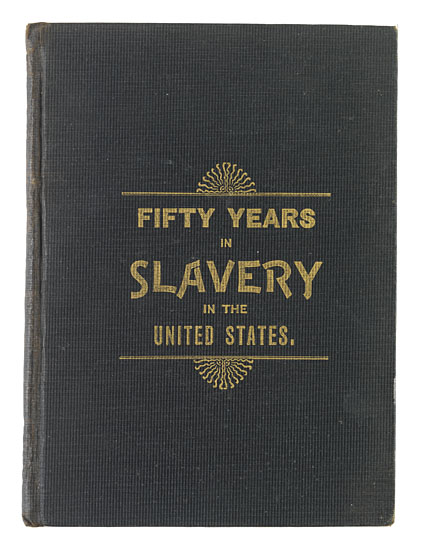(SLAVERY AND ABOLITION.) Smith, J.R., engraver; after George Morland Slave Trade. Hand-colored mezzotint, 19 3/4 x 26 1/2 inches; two vertical streaks of light toning, light foxing, a few spots of restoration in lower corners of image, wear and 1/2-inch closed tear in lower margin, laid down on board. London, 1791
In 1788, the popular English artist George Morland (1763-1804) produced an oil painting which he originally titled "The Affectionate Slaves" or "Execrable Human Traffic." The scene of an African man torn from his family by European slavers was engraved by John Raphael Smith for this 1791 print, produced in a large and popular edition, most of which were not colored. Along with the engraving of the slave ship Brookes, it provided an enduring visual image to help promote the abolitionist cause. ... In 1788, the popular English artist George Morland (1763-1804) produced an oil painting which he originally titled "The Affectionate Slaves" or "Execrable Human Traffic." The scene of an African man torn from his family by European slavers was engraved by John Raphael Smith for this 1791 print, produced in a large and popular edition, most of which were not colored. Along with the engraving of the slave ship Brookes, it provided an enduring visual image to help promote the abolitionist cause. Dawe, "Life of George Morland " page 152; Frankau, "John Raphael Smith: His Life and Works" 321 (both calling this the first of two states). See also "The Image of the Black in Western Art," pages IV:66-71; and Marcus Wood, "Blind Memory," pages 36-38.
(SLAVERY AND ABOLITION.) Smith, J.R., engraver; after George Morland Slave Trade. Hand-colored mezzotint, 19 3/4 x 26 1/2 inches; two vertical streaks of light toning, light foxing, a few spots of restoration in lower corners of image, wear and 1/2-inch closed tear in lower margin, laid down on board. London, 1791
In 1788, the popular English artist George Morland (1763-1804) produced an oil painting which he originally titled "The Affectionate Slaves" or "Execrable Human Traffic." The scene of an African man torn from his family by European slavers was engraved by John Raphael Smith for this 1791 print, produced in a large and popular edition, most of which were not colored. Along with the engraving of the slave ship Brookes, it provided an enduring visual image to help promote the abolitionist cause. ... In 1788, the popular English artist George Morland (1763-1804) produced an oil painting which he originally titled "The Affectionate Slaves" or "Execrable Human Traffic." The scene of an African man torn from his family by European slavers was engraved by John Raphael Smith for this 1791 print, produced in a large and popular edition, most of which were not colored. Along with the engraving of the slave ship Brookes, it provided an enduring visual image to help promote the abolitionist cause. Dawe, "Life of George Morland " page 152; Frankau, "John Raphael Smith: His Life and Works" 321 (both calling this the first of two states). See also "The Image of the Black in Western Art," pages IV:66-71; and Marcus Wood, "Blind Memory," pages 36-38.















Try LotSearch and its premium features for 7 days - without any costs!
Be notified automatically about new items in upcoming auctions.
Create an alert